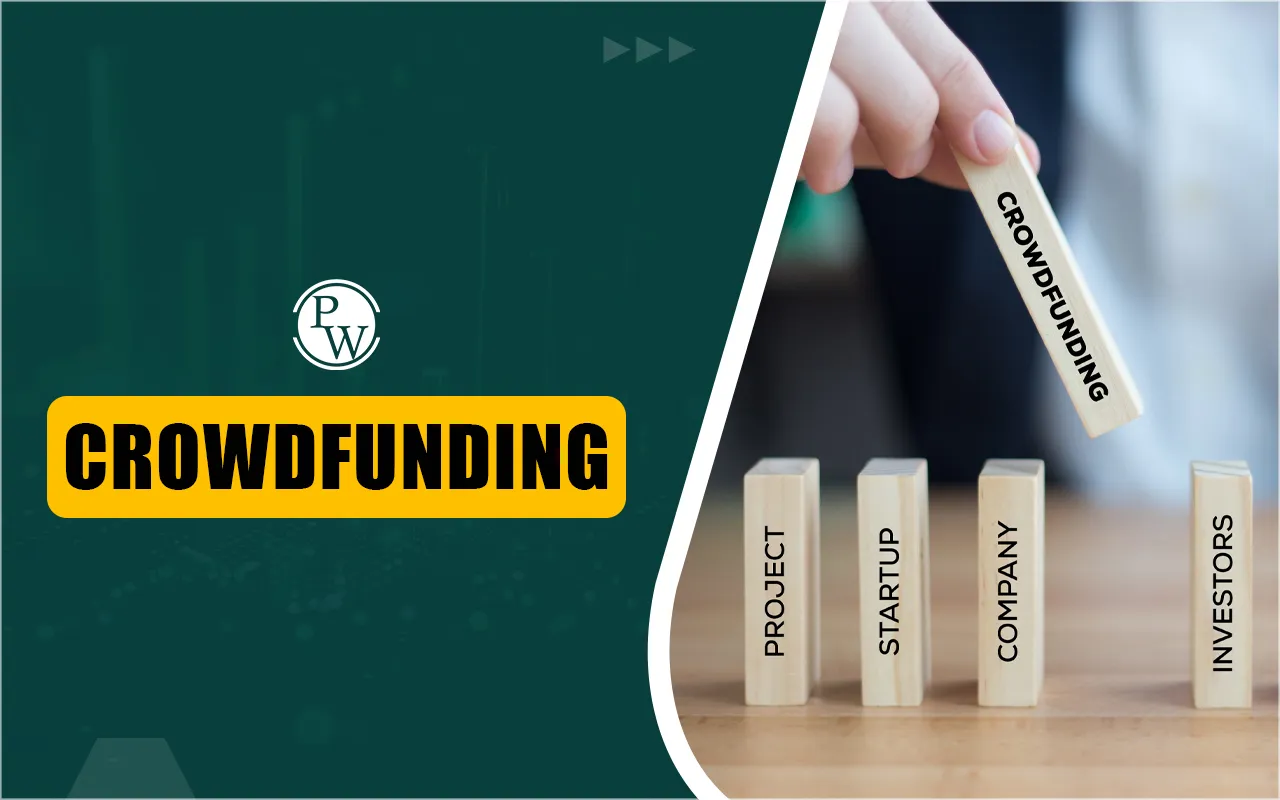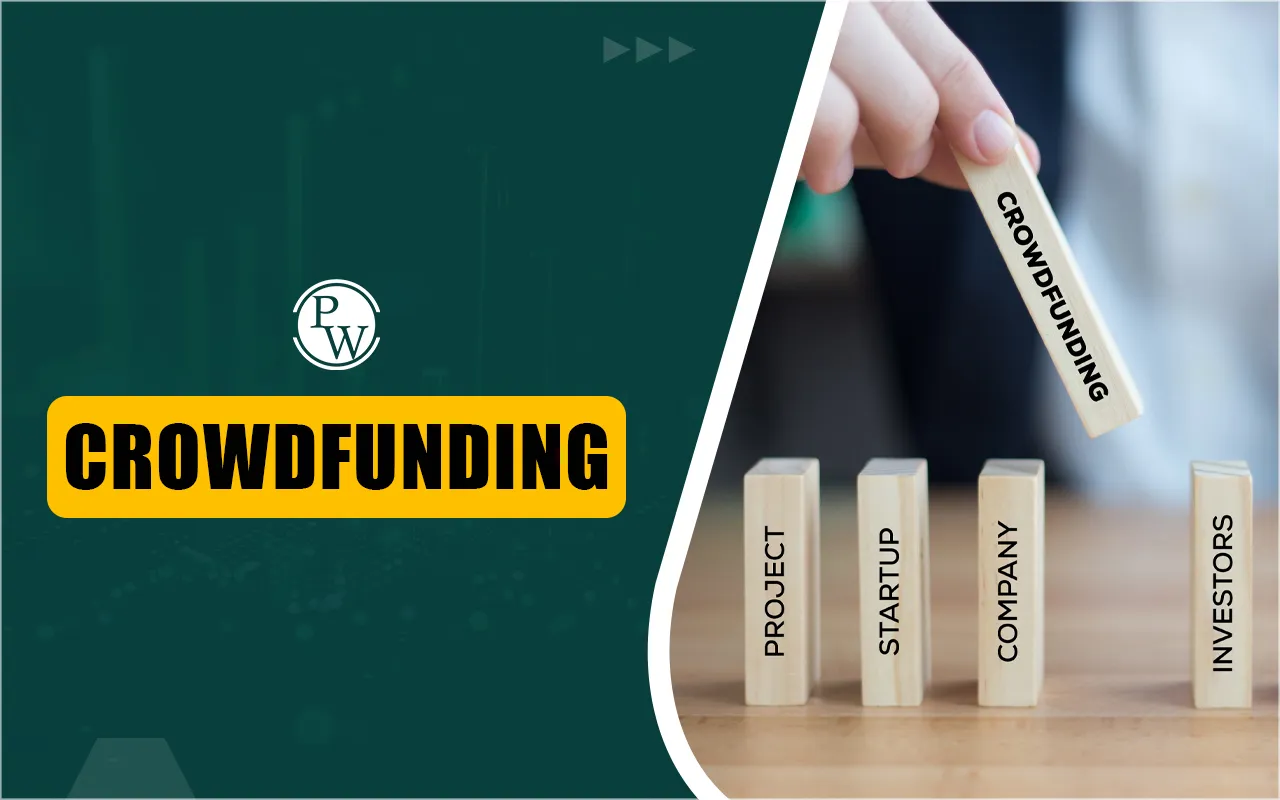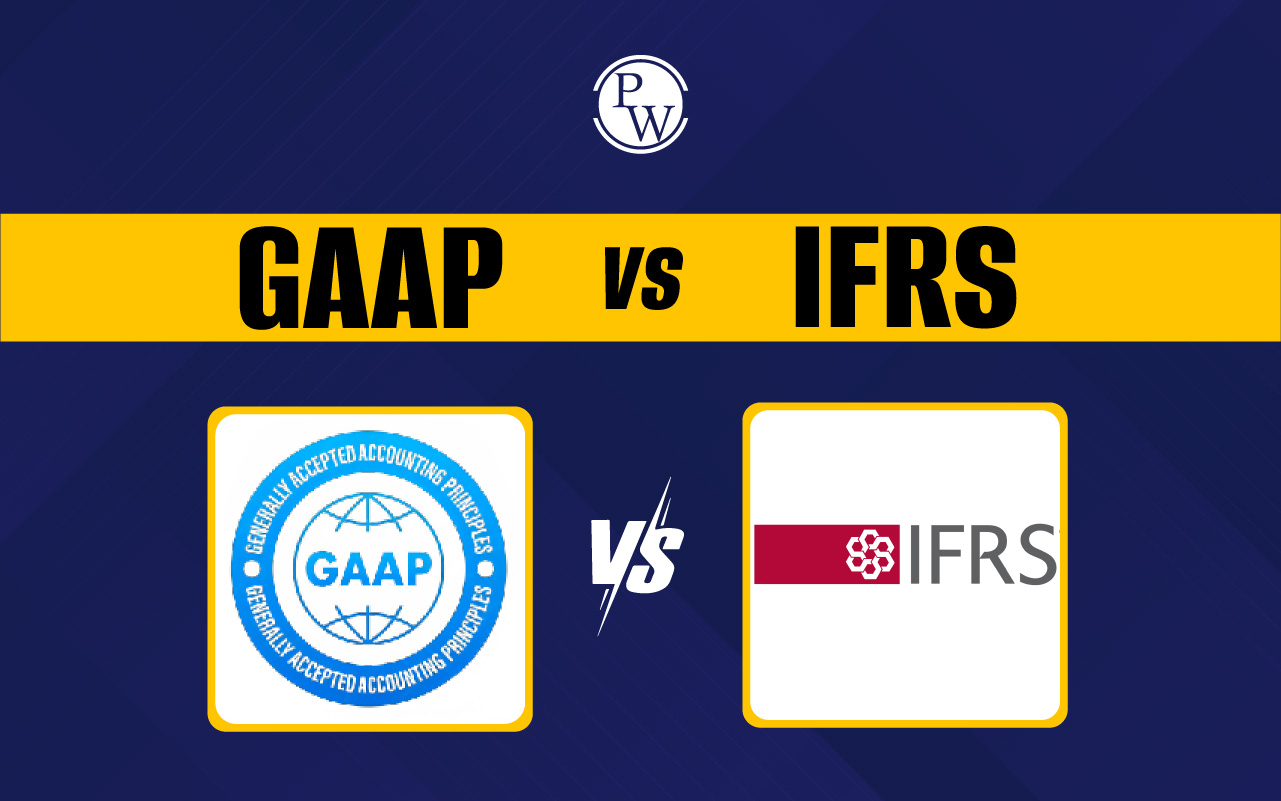

Crowdfunding: Can you fund your startup without banks? Crowdfunding offers an alternative way to raise money by connecting entrepreneurs with a broad audience online. Instead of relying on traditional funding, startups can get crowdfunding through online platforms, leveraging social media for support.
With different types of crowdfunding—equity, reward-based, property-based, and debt-based—businesses can choose what suits them best. The 2008 financial crisis fueled the rise of online crowdfunding, and today, the global market is projected to keep growing.
This guide explores what is crowdfunding for startups, how it works, its benefits, and how to choose the right approach to secure funding efficiently.
What is Crowdfunding?
Crowdfunding is a way to raise money from a large number of people, usually through the Internet, to fund a business, project, or cause.
Unlike traditional financing, it allows individuals to contribute small amounts, making funding accessible to startups and creators.
Online crowdfunding platforms connect entrepreneurs with potential backers. Businesses can get crowdfunding for new products, social initiatives, or creative ideas.
For example, many tech startups have launched innovative gadgets through crowdfunding. This method also helps build a loyal community of supporters while raising funds, making it a popular alternative to bank loans and venture capital.
How Does Crowdfunding Work?
Crowdfunding allows businesses and individuals to raise money from a large number of people, mainly through online platforms. It is a popular option for startups that struggle with traditional funding methods. Here are some simple steps to get crowdfunding:
Step 1: Choose the Right Platform
Select an online crowdfunding platform like Kickstarter, Indiegogo, or GoFundMe based on your project type and funding goals.
Step 2: Create a Campaign
Set up a campaign with a clear project description, funding goal, and rewards (if applicable). A compelling pitch helps attract backers.
Step 3: Launch and Promote
Share your campaign on social media and other channels to reach a wider audience and encourage people to contribute.
Step 4: Raise Funds
Backers pledge money, and depending on the platform, funds may be received only if the campaign reaches its target.
Step 5: Use the Funds
Once the goal is met, the funds are released to the project creator. In some cases, if the target isn’t met, the money is refunded to backers.
Crowdfunding for startups helps raise capital while also building a community of early supporters and potential customers.
Read More - How to Set Financial Goals for a Secure Future: A Complete Guide
Types of Crowdfunding
There are different types of crowdfunding, each suited to different needs. Whether you’re a startup looking for funds or an individual seeking financial help, understanding these types can help you choose the right approach. Here are the primary types of crowdfunding:
1. Donation-Based Crowdfunding – Support Without Returns:
This type of crowdfunding supports charitable causes, personal emergencies, or community initiatives, where people donate money purely out of goodwill without expecting any rewards or returns.
- Best for: Nonprofits, medical expenses, disaster relief, and social causes.
-
Example: A family affected by a natural disaster raises funds from the public to rebuild their home through an online crowdfunding platform.
2. Reward-Based Crowdfunding – Contributions With Perks:
Backers contribute money in exchange for rewards, such as early access to products, exclusive merchandise, or special experiences. It is popular for crowdfunding for startups launching new products or creative projects.
- Best for: Tech startups, artists, filmmakers, game developers.
-
Example: A new smartwatch company offers early buyers a discount or exclusive features through an online crowdfunding campaign.
3. Equity Crowdfunding – Ownership for Investors:
Investors fund a business in exchange for equity or shares. This means they become part-owners and can earn returns if the business succeeds. It’s an alternative to venture capital funding.
- Best for: High-growth startups looking for significant investment.
-
Example: A fintech startup raises funds through an equity crowdfunding platform, allowing investors to receive a share in future profits.
4. Debt-Based Crowdfunding – Borrowing From the Public:
Debt-based crowdfunding, also called peer-to-peer (P2P) lending, enables businesses to raise funds directly from individuals instead of banks. In return, lenders receive interest on the amount they lend.
- Best for: Businesses needing funds without giving up equity.
-
Example: A small business secures a loan from multiple investors through a peer-to-peer lending platform and repays it with interest.
5. Revenue-Sharing Crowdfunding – Shared Business Profits:
Businesses raise funds in exchange for a share of future profits rather than fixed interest payments. Investors earn based on the company’s revenue growth.
- Best for: Small businesses and startups with strong revenue potential.
-
Example: A new café raising funds by promising investors a percentage of monthly earnings for three years.
6. Real Estate Crowdfunding – Investing in Properties Together:
Investors pool money to buy or develop real estate projects. It provides access to property investment without needing large capital.
- Best for: Individuals looking to invest in real estate with smaller amounts.
-
Example: A group of investors finances a commercial building project through an online real estate crowdfunding platform.
7. Hybrid Crowdfunding – Combining Multiple Models:
Some businesses mix different types of crowdfunding to maximize funding opportunities. For example, a company might offer both rewards and equity to different backers.
- Best for: Startups needing flexible funding strategies.
-
Example: A gaming company offering small backers early access to the game (reward-based) while larger investors get company shares (equity-based).
However, crowdfunding for startups and individuals has opened new doors to funding opportunities. Choosing the right model can increase the chances of success and help bring ideas to life.
Pros and Cons of Crowdfunding
Crowdfunding has become a popular way for businesses, startups, and individuals to raise money through online crowdfunding platforms. While it offers several benefits, there are also challenges to consider before launching a campaign. Here are some major benefits and challenges of crowdfunding:
Pros of Crowdfunding
Crowdfunding provides financial support, market validation, and brand exposure, making it an attractive option for many entrepreneurs. Here are the top advantages of crowdfunding:
- Easy Access to Funds: Crowdfunding allows businesses and individuals to raise funds directly from supporters without the need for bank loans or venture capital. This is especially helpful for startups that may not qualify for traditional funding.
-
Market Validation: A successful crowdfunding campaign shows there is demand for a product or idea. If people are willing to invest, it proves the business concept is worth pursuing.
-
Building a Supportive Community: Supporters of a crowdfunding campaign often become loyal customers. They help spread the word and provide valuable feedback that can improve the product or service before its full launch.
-
Free Marketing and Publicity: Crowdfunding campaigns often attract attention through social media and news outlets. A well-planned campaign can create buzz, leading to more visibility and potential business growth.
-
No Need to Give Up Ownership: Unlike traditional fundraising, crowdfunding does not always require giving up equity in a company. Some types of online crowdfunding allow businesses to raise money by offering rewards or pre-orders instead of shares.
-
Opportunities for Partnerships: Successful crowdfunding campaigns can attract industry leaders, investors, and potential business partners. This can lead to more funding and networking opportunities.
Cons of Crowdfunding
Despite its benefits, crowdfunding has challenges such as high competition, financial risks, and uncertainty in achieving funding goals. Here are some key drawbacks of crowdfunding:
- High Competition: Thousands of campaigns launch on online crowdfunding platforms daily. Standing out and attracting enough backers requires strong marketing, a compelling story, and a unique offering.
-
Time-Consuming Process: Running a crowdfunding campaign takes significant effort. It involves creating promotional materials, engaging with potential backers, and continuously updating supporters.
-
No Guarantee of Success: Even with a great idea, there is no assurance that a crowdfunding campaign will meet its goal. If the target amount is not reached, pledged funds may be returned to investors, leaving the creator without funding.
-
Platform Fees: Most online crowdfunding platforms charge service fees for hosting campaigns and processing transactions. These fees reduce the total amount of money received.
-
Risk of Overpromising: To attract supporters, some creators may make unrealistic promises. If they fail to deliver, it can harm their reputation and lead to disappointed backers.
-
Intellectual Property Risks: Sharing ideas publicly on crowdfunding platforms increases the risk of idea theft. Without proper legal protections, others might copy and launch a similar product before the original creator.
Moreover, crowdfunding is a powerful tool for raising money, testing market interest, and building a loyal customer base. However, it comes with challenges such as competition, time commitment, and financial risks.
A well-planned approach can help businesses and individuals maximize the benefits while minimizing potential downsides.
Read More - Financial Economics: Definition, Methods, and Importance
How to Choose the Right Crowdfunding for Your Startup?
Choosing the right crowdfunding method is crucial for successful fundraising. The best option depends on your business model, financial requirements, and target audience. Consider these important factors before making a decision:
1. Know the Different Crowdfunding Types: Crowdfunding options include donation-based, reward-based, equity-based, and debt-based models. If you're launching a product, reward-based crowdfunding works well.
Equity crowdfunding suits businesses looking for investors, while debt crowdfunding is ideal if you can repay a loan.
2. Set Clear Funding Goals: Determine how much capital you need and what you’re willing to offer in return. If you need a small amount for product development, reward-based crowdfunding is a good fit.
For larger investments, equity or debt crowdfunding may be more suitable.
3. Identify Your Target Supporters: Consider who will back your campaign. Reward crowdfunding appeals to customers, while equity crowdfunding attracts investors.
For example, tech startups often use equity crowdfunding, while artists and creators succeed with reward-based crowdfunding.
4. Compare Online Crowdfunding Platforms: Different platforms cater to different funding models. Research platform fees, audience reach, and funding policies to find the best fit for your business.
5. Understand the Costs and Terms: Crowdfunding platforms charge fees and have different funding models. Some require you to reach your goal to access funds, while others allow flexible funding. Choose a platform that aligns with your financial strategy.
6. Check Legal and Compliance Factors: Equity and debt crowdfunding come with legal responsibilities. Ensure you comply with investor regulations and repayment obligations before choosing these options.
7. Create a Strong Campaign: Communicate what crowdfunding is for startups and how the funds will be used. A compelling pitch with engaging visuals and a clear message increases your chances of success.
8. Use Marketing to Boost Visibility: Online crowdfunding success depends on strong promotion. Use social media, email marketing, and influencer support to attract backers. Engaging content can help generate excitement and funding.
9. Analyze Past Successful Campaigns: Study successful crowdfunding projects in your industry to understand what works. Learn from their strategies to improve your own campaign.
10. Plan for Post-Funding Responsibilities: Once you get crowdfunding, ensure you fulfill promises. Deliver rewards on time, keep investors updated, and maintain transparency to build trust for future growth.
By evaluating these factors, you can select a crowdfunding method that suits your startup, attracts the right supporters, and supports long-term growth.
Understanding crowdfunding is valuable for entrepreneurs and professionals seeking funding or business growth. It enhances skills in finance, marketing, and audience engagement, creating more opportunities to secure funds and build a successful venture.
Learn Financial Skills with PW Financial Modeling Course
The PW Financial Modeling Course with Deloitte Academy covers financial analysis, budgeting, forecasting, and investment decision-making. This 3-month live program includes real-world case studies, practical projects, and industry-recognized certification. Join the PW Financial Modeling Online Course today and start building your financial skills!
FAQ
What is crowdfunding, and how does it help startups?
What are the main types of crowdfunding?
How does online crowdfunding work?
Is crowdfunding legal in India?
What factors should startups consider before choosing a crowdfunding method?













